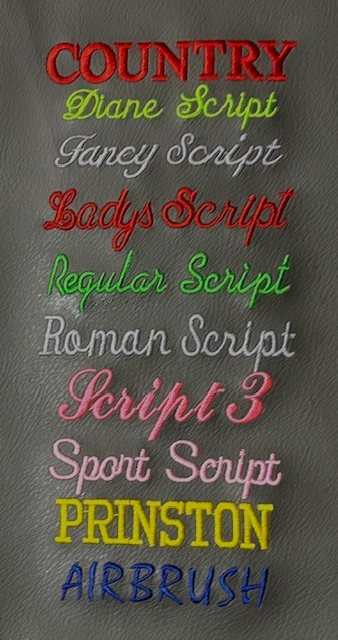The Art of Customized Embroidery: Unlocking the Secrets to Creating Special and Remarkable Layouts
The tricks to creating custom needlework styles that captivate the eye and leave a long-term perception lie in a delicate equilibrium of technique, creative thinking, and interest to detail. As we delve into the world of custom-made needlework, we uncover the nuanced interaction between string selection, sew complexity, and layout personalization that raises a mere garment to a job of art.
Choosing the Right Needlework Threads
When choosing needlework strings, what key elements should you take into consideration to make certain the most effective outcomes for your personalized designs? The choice of embroidery thread is vital in establishing the last outcome of your embroidered design. One of the main factors to consider is the product of the string. Various products such as cotton, polyester, rayon, and silk supply differing degrees of sheen, resilience, and structure. It is important to pick a string product that matches the textile you are embroidering on and aligns with the preferred appearance of the layout.
Thicker strings can add measurement and structure to your layout, while finer threads are perfect for detailed details and tiny text. In addition, thinking about the shade fastness and washability of the thread is essential to make certain that your customized layouts maintain their top quality and vibrancy over time.
Exploring Various Stitch Techniques
To explore the realm of 'Discovering Different Stitch Strategies', one should realize the complexities and subtleties that each sewing method gives the art of needlework. Different stitch methods not just add visual passion but likewise add to the total texture and measurement of the layout. One popular stitch technique is the satin stitch, which includes very closely packed parallel stitches to produce a smooth and glossy surface area, ideal for filling up in forms and developing bold describes.
On the various other hand, the backstitch is a functional strategy frequently utilized for detailing and including great information. It entails sewing in reverse to create a solid line of needlework. In addition, the French knot stitch includes a tactile component to styles, best for creating textured accents like flower centers or ornamental touches.
Checking out different stitch methods enables embroiderers to play with light, shadow, and depth within their designs, elevating the aesthetic allure and imaginative top quality of their needlework jobs. By grasping different stitching techniques, one can unlock endless possibilities for creating unique and unforgettable custom needlework pieces.
Incorporating Personalized Layout Elements
Having explored the intricacies of go to this web-site different stitch strategies such as the satin stitch, backstitch, and French knot, the focus now shifts in the direction of incorporating personalized layout aspects in custom needlework projects. Individualized design aspects play an essential duty in making embroidery tasks really one-of-a-kind and memorable.
An additional way to include personalized style elements is by including icons or motifs that hold special definition to the recipient or reflect their rate of interests and individuality. Integrating a favored blossom, pet, or hobby-related sign can make the embroidery design extra purposeful and individualized. In addition, selecting colors that resonate with the recipient or line up with the designated style can additionally improve the customization of the needlework task.
Mastering the Art of Shade Coordination

One key element of shade coordination is comprehending shade theory. This includes understanding just how different colors communicate with each other, the emotions they communicate, and just how they can be combined to produce aesthetically enticing designs. By applying color concept concepts, embroiderers can develop harmonious color schemes that enhance the total look of the style.
In addition, taking notice of comparison is critical in shade coordination. Using contrasting colors can help specific components of the design pop, enhance clarity, and produce an aesthetically vibrant needlework item. By understanding the art of shade control, embroiderers can boost their layouts and develop remarkable items that reverberate with customers and visitors alike.
Enhancing Texture With Advanced Needlework Stitches
French knots, for instance, are perfect for adding small, raised dots to your design, imitating the look of beads or creating a textured surface area. Bullion knots, on the various other hand, can be made use of to develop twisted, ropelike components that include a glamorous feel to the embroidery. Seed stitching involves tiny, scattered stitches that can fill out locations with a polychromatic appearance, while turkey job produces cosy, dimensional accents evocative pet hair or vegetation. Try out these sophisticated embroidery stitches allows you to press the borders of typical needlework and produce really special and visually appealing appearances in your layouts.
Conclusion
To conclude, the art of personalized embroidery entails a combination of choosing the ideal threads, discovering different stitch techniques, including tailored style components, grasping shade sychronisation, and boosting structure with innovative stitches. By comprehending and implementing these crucial elements, embroiderers can produce unique and unforgettable layouts that display their imagination and ability. Embroidery fanatics can unlock the tricks to developing stunning and custom pieces that stick out and leave a lasting perception.